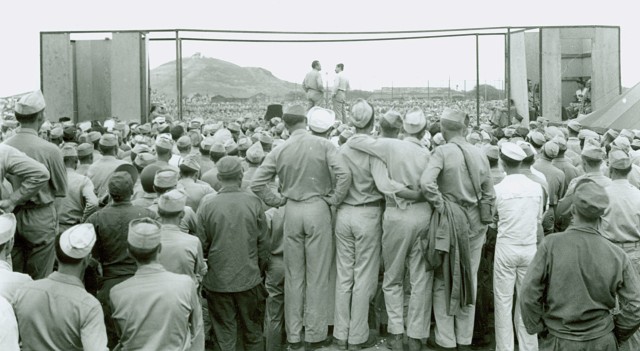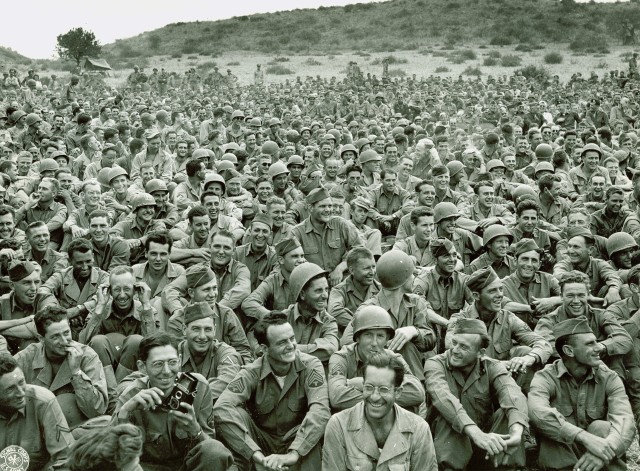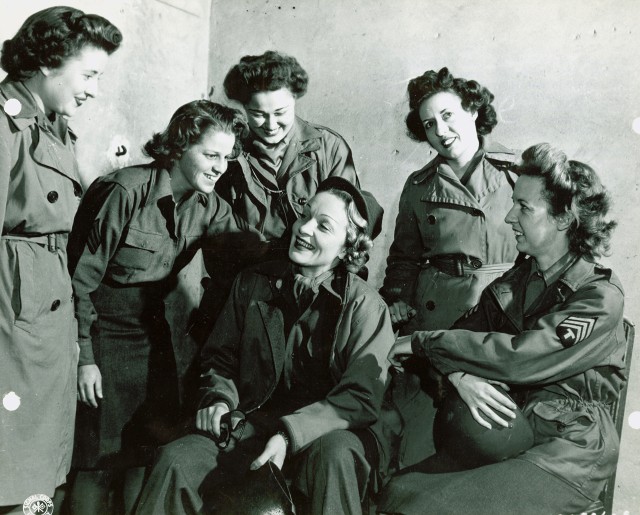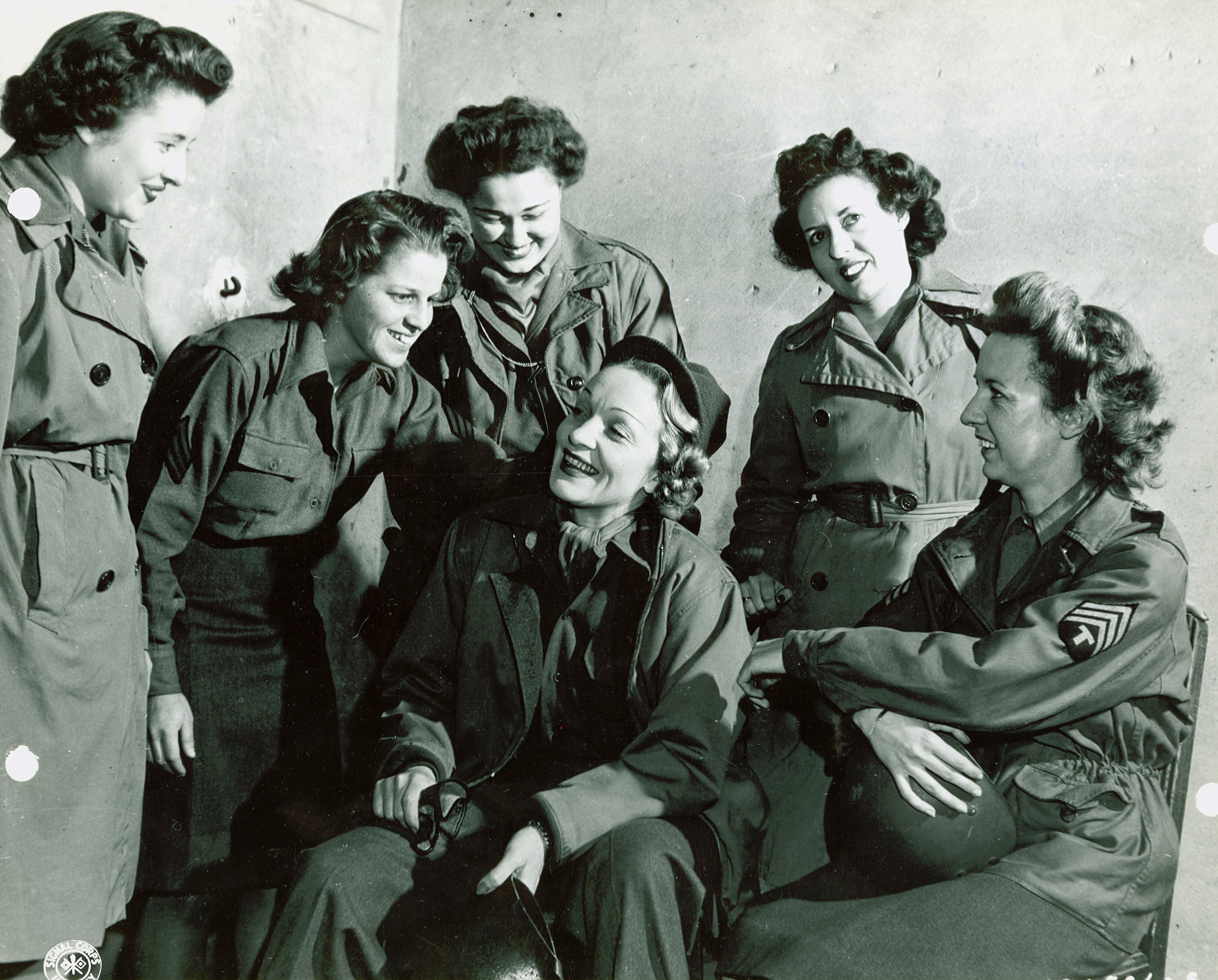"The people at home occupy a strategic place in a nation at war. One of their major responsibilities is to convince the armed forces that the country is behind them," wrote General Dwight D. Eisenhower as he described the purpose of the USO, which not only brought laughter and American cheer to the front lines but also provided a channel through which civilian men and women could support the war effort. This statement stands as true today as it did during World War II. This week in Army history commemorates the founding of the United Service Organizations (USO) on February 4, 1941, and its support of soldiers, their families and the armed forces for over six decades.
From its inception, the USO was to be a civilian-run organization whose purpose was to provide social, welfare, recreational and spiritual facilities to men and women in the armed services and their families. While General George C. Marshall first proposed the idea of coordinating civilian volunteer efforts on behalf of the rapidly growing armed forces in 1940, it was at the recommendation of President Franklin D. Roosevelt that the task was put in the hands of six, already existing, public service organizations: the Salvation Army, the International Committee of YMCA, the National Board of the YWCA, the National Jewish Welfare Board, the National Catholic Community Service, and the Travelers Aid Association of America. The USO was and still is a private, nonprofit, civilian-run and volunteer-based organization whose funding comes solely from individual, organizational and corporate donations and contributions.
Soon after it was chartered by Congress, the USO quickly established centers in churches, museums, barns, railroad cars, storefronts, and other unusual places throughout the world. These centers provided places for fun, relaxation, communication and assistance in building bridges between the local community at home and military personnel in camp and overseas. The numbers were staggering; during WWII alone the USO had well over 3,000 recreation clubs and 700,000 volunteers, and by 1947 over 400,000 shows had been performed. By the end of 1947, the USOAca,!a,,cs services were discontinued, but they were resumed in 1949 at the request of President Harry S. Truman. The USO was reorganized during the Korean War and expanded considerably during the Vietnam War, where for the first time centers were established in combat zones. Today the USOAca,!a,,cs presence extends from a brand new center at the Denver International Airport and centers throughout the U.S. to centers in Europe, the Middle East and Asia. These 130+ centers worldwide are visited by more than 5,000,000 service and family members each year.
It has been said that home is the common denominator for which the American GI fights and is therefore the cause in which they believe. Bob Hope, when reflecting on his fifty years with the USO, stated that Aca,!A"when they look up on stage they see home, familyAca,!A|.They see America.Aca,!A? Among the tens of thousands of archival collections and historical holdings at the Army Heritage and Education Center at Carlisle Barracks, many soldiers have shared their experiences and photographs of the USO, whether it was seeing a show with Bob Hope, Danny Kaye or Ann Margret or using the countless services that USO offered. The USO remains one of the many long-held traditions in the armed forces that is shared with past generations of those who have served. The USO continues to provide American military personnel that essential bond of support with those at home.
ABOUT THIS STORY: Many of the sources presented in this article are among 400,000 books, 1.7 million photos and 12.5 million manuscripts available for study through the U.S. Army Military History Institute (MHI). The artifacts shown are among nearly 50,000 items of the Army Heritage Museum (AHM) collections. MHI and AHM are part of the: Army Heritage and Education Center (AHEC), 950 Soldiers Drive, Carlisle, PA, 17013-5021.










Social Sharing